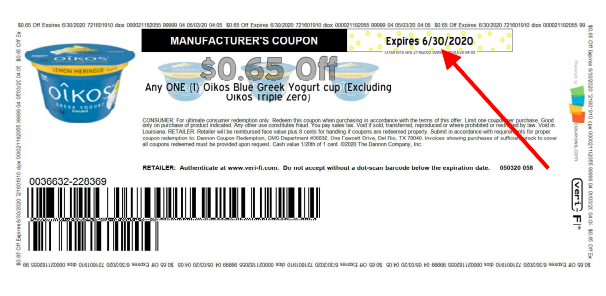A Beginner’s Guide to Couponing: Policies, Restrictions, and Limits, Oh My!
As I mentioned in part 1 of this series, learning couponing terminology is incredibly valuable, as most couponing websites and couponers on social media use these terms frequently. Once you’ve reviewed these terms and committed them to memory, you can begin the second step in learning to coupon: policies, restrictions, and limits.
Before you read this second post in the series, it is important to note that every region and every area is different. As a New England resident, I am most familiar with the couponing restrictions, policies, and limits in my state, so yours will likely vary. All this means is that YMMV (remember that term?), so you’ll need to do a bit of your own homework there.
Couponing restrictions touch upon a few different areas. They are as follows…
- What your state allows: now where I live, tax is calculated on the POST-coupon price, which is a major benefit, but most regions charge tax based on the PRE-coupon price. Make sure to account for this when calculating your total. Laws vary by state, so especially if you live in a more restrictive area, make sure to review those legalities.
- What the store allows: a common question I get is, do all stores accept coupons? And the answer is a loud NO! The vast majority of stores do (including Dollar Tree!), but not all. It’s important to take a moment to review the coupon policy of the store you intend to shop at. The CVS coupon policy, for example, states that you CAN use a coupon on an item that is cheaper than the value of the coupon (for example, a $5 off coupon on a $4.99 item), but the coupon WILL adjust down to $4.99. It would take far too long to go over every coupon policy for every store that accepts coupons, so make sure to independently research the coupon policy of the store you want to shop at by simply googling “_____ coupon policy”. Review this before heading in-store!
- & finally, what the coupon allows: here is where most people get confused because coupons do not always state things in an obvious way. The example we are using is an online printable (found at retailers such as coupons.com, redplum.com, etc), but all coupons follow the same basic pattern.
- The first factor is the expiration date. This should be fairly obvious, but it will tell you how long the coupon is good until.

- The second factor to consider is the limit per purchase and per transaction. This coupon does not state a transaction limit, but if it did, you will have to abide by it, UNLESS the store limit is lower (ex: store policy allows 4 coupons per transaction, but coupon states up to 6 per transaction, the store policy would override that 6. This also works in the inverse). The coupon does state one per purchase, meaning I can use one coupon for each item I purchase.
- The first factor is the expiration date. This should be fairly obvious, but it will tell you how long the coupon is good until.